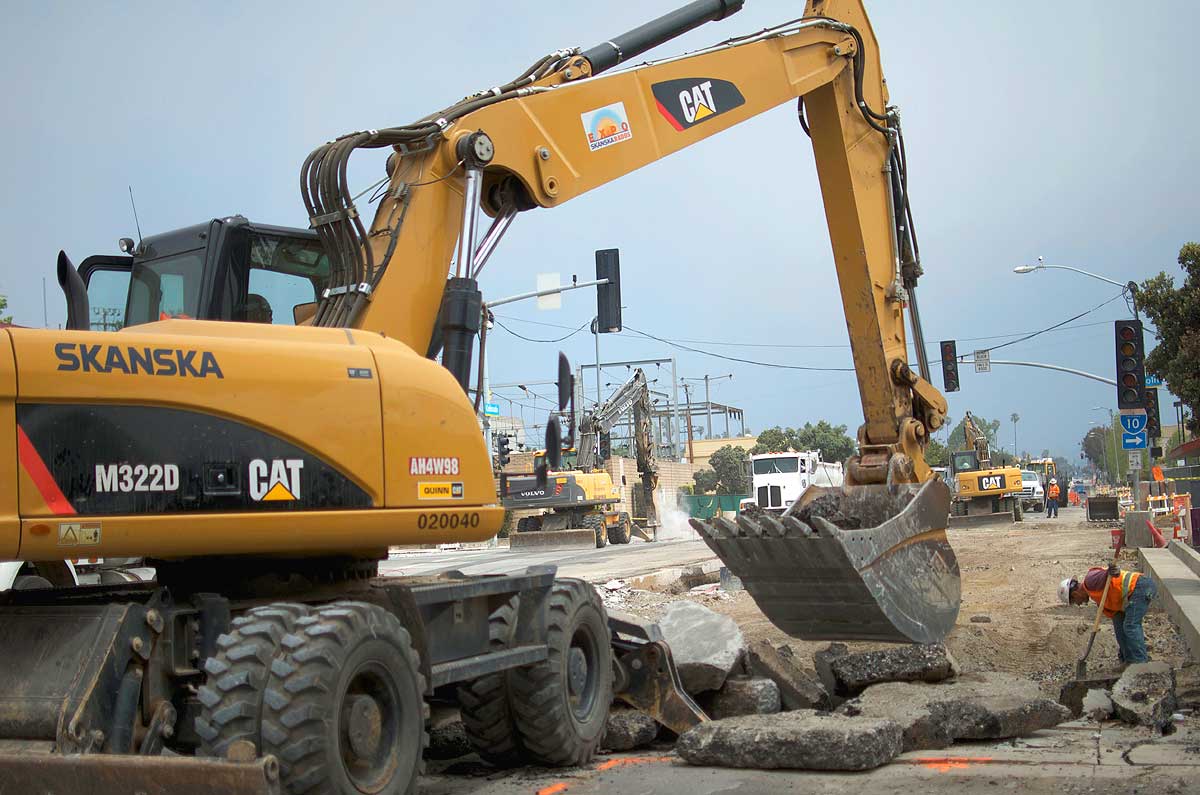
COLORADO AVE — The train is coming on time.
Construction is 60 percent complete for the second phase of the incoming Expo Light Rail, which could open to the public by late 2015.
The first half of the project has been hard to miss. Lincoln Boulevard just reopened after a week-long closure and sections of Fifth Street, including the Interstate 10 off-ramp, closed for 10 days back in January. The remaining work, said construction manager Robb Fonkalsrud, might be less noticeable.
"The 60 percent, all of that is real visual," he said. "The bridges are going up, the stations are going up, but behind that 40 percent that's remaining there's a lot of electrical systems that aren't visible. The guts of the train control system, with all the signaling, are going in."
You'll notice the canopies coming in over the stations, the street lights, and the concrete pours.
You'll definitely notice the seven remaining intersections that still need tracks laid over them. Four of the 11 intersections, including Fifth Street and Lincoln Boulevard, have already been taken care of. Most of the remaining closures will occur on the east side of town, including 26th and Stewart streets.
City Hall's Principal Transportation Engineer, Sam Morrissey, has said that the most impactful closure are behind us and Fonkalsrud concurred.
The relocation of all of Santa Monica's utilities has been one of the biggest challenges for the Expo construction team but it is nearly complete.
There are gas lines, sewer lines, the water lines — both for drinking and for public fountains and irrigation — and a giant tunnel-like storm drain underneath Colorado Avenue that needed to be moved to make room for the tracks.
"We have utility maps and they're only as good as the guy who installed them," Fonkalsrud said. "If he does a good job updating his drawings and saying this is actually where we placed it then there's no surprises. Obviously that never totally happens."
There have been a few surprise utility lines for construction workers but nothing they couldn't work around, he said.
This, Fonkalsrud said, is the beauty of the design-build process. Unlike a standard bid-build process, the designs for the Expo construction are flexible and altered as the process goes on.
"The designers work for us so if there is an obstacle in the ground then we run back to the office and ask them if can we move this pipe in a different location," he said. "They say, ‘yeah that's fine,' and we get the blessing from (City Hall) and we move forward. It's real good, quick process."
Skanska-Rados Joint Venture, the company tasked with construction, promises to have the train "basically up and running" by July of 2015, Fonkalsrud said. From there, they'll turn the project over to Metro for about six months of testing.
"There's, of course, different issues they'll have to work through," Fonkalsrud said. "On our side we're on target to meet our goals."








